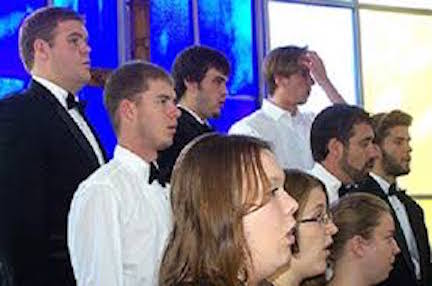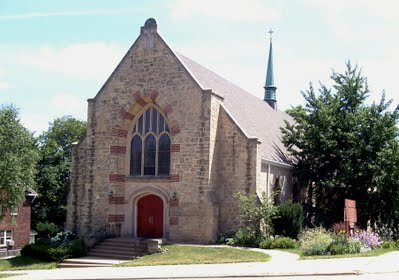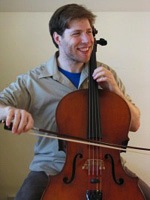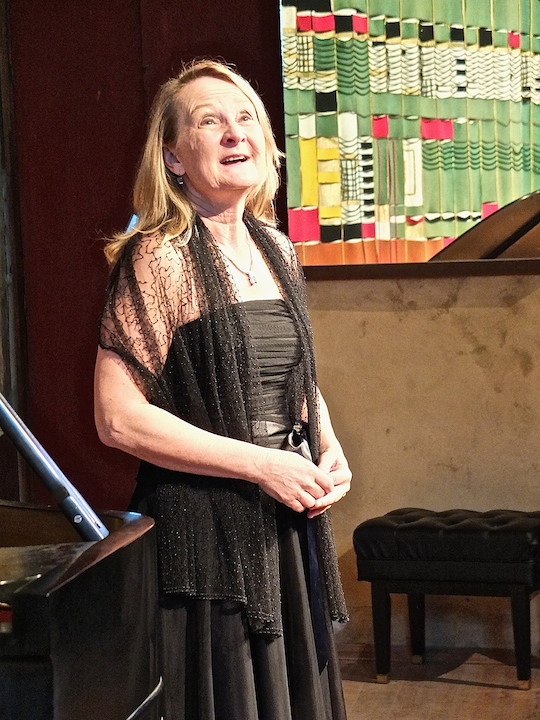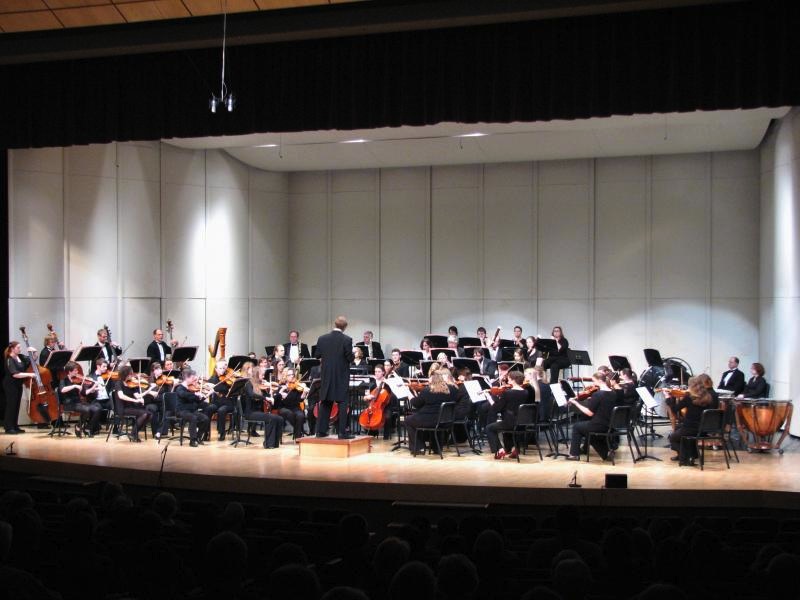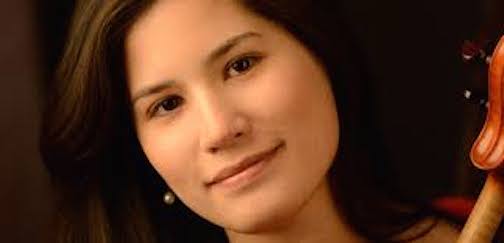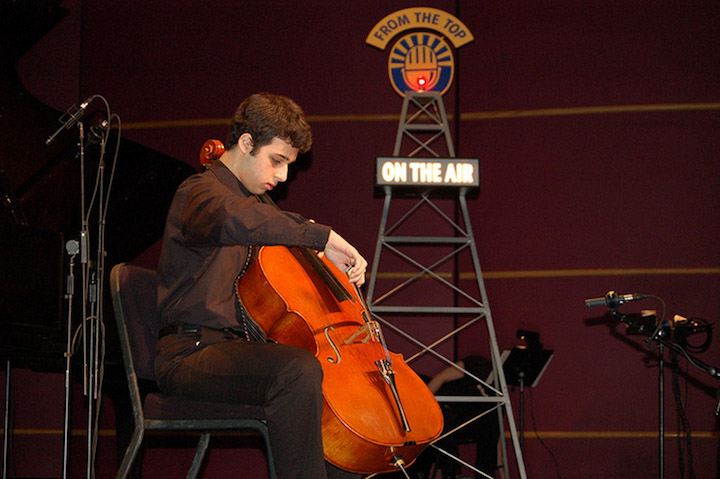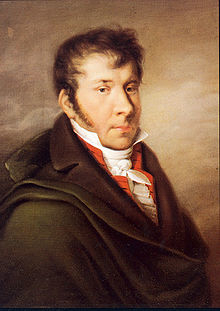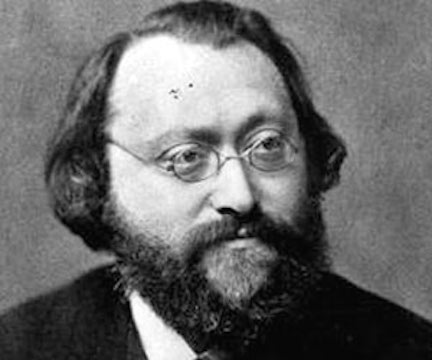The Well-Tempered Ear
Edgewood College will live-stream its FREE Spring Celebration concert this Friday night
Leave a Comment
PLEASE HELP THE EAR. IF YOU LIKE A CERTAIN BLOG POST, SPREAD THE WORD. FORWARD A LINK TO IT OR, SHARE IT or TAG IT (not just “Like” it) ON FACEBOOK. Performers can use the extra exposure to draw potential audience members to an event. And you might even attract new readers and subscribers to the blog.
By Jacob Stockinger
At 8 p.m. CDT this Friday night, April 30, the music department at Edgewood College will live-stream its FREE online Spring Celebration concert.
Here is the link: music.edgewood.edu
Here is the program:
The Edgewood Chamber Orchestra (below) will perform music by the Austrian composer Johann Nepomuk Hummel, who studied with Mozart and knew Haydn, Beethoven and Schubert (see the Wikipedia bio at https://en.wikipedia.org/wiki/Johann_Nepomuk_Hummel; Krzysztof Penderecki, a Polish composer who died a year ago March; and the Argentinean “new tango” composer Astor Piazzolla, whose birth centennial was last month. Soloists include Gwyneth Ferguson on trumpet, and Malia Huntsman on oboe.
The Chamber Singers (below) will offer selections from Broadway musicals and contemporary choral arrangements, including Lord of the Rings by Enya, works from Josh Groban, and the Polish composer Henrik Gorecki.
The Guitar Ensemble will perform Haru no Umi (The Sea in Spring) by the Japanese composer Michio Miyagi (below), and a medley from the 1970s rock group Chicago: 25 or 6 to 4/Saturday in the Park, by Mark Lamm.
The Chamber Winds will perform selections from Crooner’s Serenade; Josef Rheinberger’s Evening Song (Abendlied, in the YouTube video at the bottom); and an arrangement of John Williams’ movie score for Star Wars: The Force Awakens.
Tags: #ArgentineanComposer, #BlogPost, #BlogPosting, #BroadwayMusical, #CentralTime, #ChamberMusic, #ChamberOrchestra, #ChoralMusic, #CoronavirusPandemic, #Crooner'sSerenade, #DaylightTime, #EdgewoodCollege, #EdgewoodCollegeChamberOrchestra, #EdgewoodCollegeChamberSingers, #EdgewoodCollegeChamberWinds, #EdgewoodCollegeGuitarEnsemble, #EveningSong, #FacebookPost, #FacebookPosting, #FranzSchubert, #GuitarMusic, #GwynethFerguson, #HaruNoUmi, #HenrickGorecki, #JacobStockinger, #JapaneseComposer, #JapaneseMusic, #JohannNepomukHummel, #JohnWilliams, #JosefRheinberger, #JoshGroban, #KrzysztofPenderecki, #LiveStreaming, #LordoftheRings, #LudwigVanBeethoven, #MailaHuntsman, #MarkLamm, #MichioMyagi, #MovieScore, #MusicalTheater, #NewMusic, #NewTango, #OboeMusic, #OnlineConcert, #OrchestralMusic, #PolishComposer, #RockandRoll, #RomanCatholic, #SergeiPavlov, #StarWars, #StarWars:TheForceAwakens, #TheEar, #TrumpetMusic, #VirtualConcert, #VocalMusic, #Wikipediaentry, #WindMusic, #WolfgangAmadeusMozart, #YouTubevideo, 1970s, Abendlied, Argentina, arrangement, arrangements, Arts, Asia, asian, audience, Austria, Austrian, Ástor Piazzolla, Beethoven, biography, blog, blog posting, Broadway, Broadway musical, Catholic, centennial, Central Time, Chamber music, chamber orchestra, Chicago, Choir, choral music, Classical music, composer, Concert, contemporary, coronavirus, coronavirus pandemic, crooner, Crooner's Serenade, daylight time, Edgewood College, Edgewood College Chamber Orchestra, Edgewood College Chamber Winds, Edgewood College Guitar Ensemble, Enya, evening, Evening Song, Facebook, film, forward, Franz Schubert, German, Germany, group, guitar, guitar music, guitarist, Gwyneth Ferguson, Haru no Umi, Henrik Gorecki, Hummel, Jacob Stockinger, Japan, Japanese, Johann Nepomuk Hummel, John Williams, Josef Rheinberger, Josh Groban, Krzysztof Penderecki, like, link, live-stream, livestream, Lord of the Rings, Ludwig van Beethoven, Madison, Malia Huntsman, march, Mark Lamm, medley, Michio Myagi, month, movie, movie score, Mozart, Musical theater, new, new nusic, new tango, Oboe, oboist, online, orchestral music, pandemic, Penderecki, perform, performer, Piazzolla, player, Poland, Polish, post, posting, Rock, rock and roll, Roman Catholic, Schubert, sea, seledtions, Serenade, Sergei Pavlov, share, sing, singer, Singing, soloist, song, Spring, Star Wars, Star Wars: The Force Awakens, Student, study, tag, tango, The Ear, Trumpet, trumpeter, Viola, Violin, virtual, vocal music, Wikipedia, wind instruments, wind music, Wisconsin, Wolfgang Amadeus Mozart, works, year, YouTube
Classical music: The Middleton Community Orchestra opens its season with polished viola playing from Vicki Powell and infectious enthusiasm from the entire orchestra in a Dvorak symphony.
1 Comment
By Jacob Stockinger
Here is a special posting, a review written by frequent guest critic and writer for this blog, John W. Barker. Barker (below) is an emeritus professor of Medieval history at the University of Wisconsin-Madison. He also is a well-known classical music critic who writes for Isthmus and the American Record Guide, and who for 20 years hosted an early music show every other Sunday morning on WORT FM 89.9 FM. He serves on the Board of Advisors for the Madison Early Music Festival and frequently gives pre-concert lectures in Madison.
By John W. Barker
The Middleton Community Orchestra (below) opened its fifth season on last Wednesday evening with a mix of novelties and old favorites.
The orchestra’s new concertmaster, Valerie Clare Sanders, a senior at the UW-Madison School of Music who also plays with the Madison Symphony Orchestra, also made her debut with the MCO.
The starter was the ever-popular, ever-rousing Overture to the opera “William Tell” by Rossini. The playing seemed a little less fully digested, but the piece still came off with spirit.
The unfamiliar elements were two display pieces for the young but highly gifted, Madison-born violist, Vicki Powell (below). She offered a superbly warm, rich, clearly projected tone, presented in a thoroughly professional manner— reminding us, too, how underappreciated the viola is as a solo instrument.
Her first selection was a Fantasia on themes of Mozart, by Johann Nepomuk Hummel (1778-1837), a protégé of Mozart and rival to Beethoven. Originally a solo piano piece of 1833, if I am not mistaken, it was arranged for solo viola and chamber orchestra by the French musician Fernand Oubradous. It proved to be charming music, beautifully played.
The second piece was a Romance, Op. 85, of 1911, for viola and orchestra. Composed in lush late-Romantic style, it could have been a movement of a concerto, and was a handsome dialogue between soloist and orchestra, realized with particularly gorgeous tone by Powell. She is a musician to watch for.
The grand finale was the Symphony No. 8 in G major by Antonin Dvorak.
Here I must ask the reader’s patience if I indulge in a strong personal memory about this work — and a very pertinent one.
When I was a graduate student in the late 1950s at Rutgers University, in New Brunswick N.J., I attended a concert by the New Brunswick Community Philharmonic (if I remember its name correctly). It consisted of semi-professionals and amateurs of the area, under the baton of the local high-school bandmaster, one Max Pecker. This has proven to be one of the most memorable concerts of my musical lifetime, and I still recall the program vividly.
Franz Schubert’s bouncy Overture to his opera “Alfonso und Estrella” immediately revealed that this orchestra was a pretty scrappy affair in terms of discipline. BUT: the players were having so much fun in their work that it was impossible not to share their enthusiasm.
The second work was the Piano Concerto No. 2 of Camille Saint-Saëns, featuring a local keyboard whiz just back from the Paris Conservatory. For him the orchestra had made its most careful preparation, and their playing came off as quite credible.
But the final work was this very same G major Symphony by Dvorak (below). Now, the orchestra’s concertmaster was also the local newspaper’s music critic (!), and in her review of the concert she revealed the profundity of her knowledge by observing that, though this symphony was not as well-known as Dvorak’s Symphony No 9 “The New World,” it was, she insisted, “not without moments of interest” (! again). (You can hear the entrancing and beautiful symphony in a YouTube video at the bottom.)
The important thing was that, even though the work was rough going for this ensemble, the sheer joy of the players was simply contagious. The most honest kind of musical pleasure filled the hall. As I said, this is a concert I have never forgotten, always remembered affectionately.
I had that concert very much in mind in listening to the MCO performance.
Oh yes, there were some passing fluffs here and there. But this was an orchestra that could play with discipline and coherent unity of purpose, far beyond the New Brunswickers’ capacities. The parallel was, however, that the players seemed clearly to have caught the enthusiasm for the score conveyed to them by conductor Steve Kurr (below).
Better than most performances I have heard, Kurr projected an intensity and even dramatic emphases that the orchestra took up and gave back to him gloriously.
One member told me afterwards: “We enjoyed playing it.” And I found myself at times transported with delight at how this magnificent score once again came alive for me, thanks to music-making that was more than just a matter of artistic efficiency.
My point is not just a matter of nostalgia revived. It is a reminder that one does not have to have a performance by one of the super-polished orchestras of our Big Cities, or of the international world, in order to have a memorable listening experience.
A deeply committed orchestra under inspired and inspiring leadership can offer as satisfying a musical experience as can be found anywhere.
Madison audiences should therefore listen up and pay attention to Middleton’s really splendid community orchestra, taking advantage of its offerings to discover the genuine rewards.
Tags: American Record Guide, Antonín Dvořák, Arts, Camille Saint-Saëns, Classical music, concerto, Early music, fantasy, Fernand Oubradous, Franz Schubert, Hummel, Jacob Stockinger, Johann Nepomuk Hummel, Madison, Madison Symphony Orchestra, Max Bruch, Middleton Community Orchestra, Orchestra, Overture, Piano, Romance, Romantic, Rossini, Rutgers University, Steve Kurr, University of Wisconsin-Madison School of Music, University of Wisconsin–Madison, Vicki Powell, Viola, Violin, Willliam Tell, YouTube
Classical music: Vicki Powell talks about why she took to the viola rather than the violin. She returns to Madison to solo next Wednesday night with the Middleton Community Orchestra. Plus, cellist Yo-Yo Ma’s SOLD-OUT recital Saturday night at the Wisconsin Union Theater will be WEBCAST LIVE and FOR FREE.
2 Comments
REMINDER: This Saturday night, superstar cellist Yo-Yo Ma (below right) will make his seventh appearance at the Wisconsin Union Theater at 8 p.m. in Shannon Hall. His recital features works by Igor Stravinsky, Johannes Brahms, Olivier Messiaen, Heitor Villa-Lobos, Astor Piazzolla and others with piano accompanist Kathryn Stott (below left). The event is SOLD OUT to the general public, although some student tickets may remain. For more information, here is a link:
http://www.uniontheater.wisc.edu/season14-15/yoyoma-kathynstott.html
BUT: If you didn’t get a ticket to the sold-out Yo-Yo Ma and Kathryn Stott concert Saturday night, October 18, in Shannon Hall in the Wisconsin Union Theater, don’t fret. The concert will be webcast if you go to the page above at 8 p.m.
By Jacob Stockinger
The Ear loves the sound of the viola, with its mellow mediating between the higher violin and the lower cello.
And he will have the chance to hear it in some unusual repertoire this coming Wednesday night, Oct. 22, when the Madison-born violist Vicki Powell (below top) returns to solo with the Middleton Community Orchestra (below bottom, in a photo by William Ballhorn) under conductor Steve Kurr.
The MCO opens its fifth season at 7:30 p.m. on Wednesday in the Middleton Performing Arts Center, 2100 Bristol Street, that is attached to Middleton High School. Tickets are $10 general admission; students get in for FREE. Advance tickets can be bought at the Willy Street Coop West.
The program includes the Overture to “William Tell” (which contains the brass fanfare theme to TV show “The Lone Ranger”) by Gioachino Rossini; the Fantasy for Viola and Orchestra by Johann Nepomuk Hummel; the Romance for Viola and Orchestra by Max Bruch; and the Symphony No. 8 by Antonin Dvorak.
For more information about the amateur but very accomplished ensemble, including how to join it and support it and find out what the coming season will bring, call (608) 212-8690 or visit: http://middletoncommunityorchestra.org
Violist Vicki Powell (below) recently gave an email interview to The Ear:
Could you briefly introduce yourself to readers and tell us a bit about yourself, including when you started music lessons, your early preparation and your life in Madison as well as your personal interests (hobbies, etc.) and professional career plans?
Greetings from New York City, the city that never sleeps and that is certainly never lacking in cultural events. I am a native Wisconsinite, raised in Madison, but for the past eight years I have been living on the East Coast.
After earning my Bachelor’s of Music at the Curtis Institute, where I studied with Roberto Diaz and Misha Amory, I moved to New York City to pursue my Master’s at the Juilliard School, and have lived in the city ever since.
My life consists of a potpourri of musical activities, from performing with the Jupiter Chamber Players, to playing with the New York Philharmonic, to collaborating with ballet companies alongside my new music group Ensemble39. I’ve traveled across the globe and collaborated with many incredible musicians, but my most fond memories are from my time back home, the formative years of my musical being.
I began taking violin lessons with Maria Rosa Germain at the age of four after hearing my brother, Derek, play the violin. I have such a vivid memory of the moment when I decided that I wanted to play the violin: It was dusk, and I was curled up on the green shag carpet of our basement floor, the last bits of daylight leaking in through the windows above. Derek was practicing the Waltz by Johannes Brahms from Suzuki, Book Two a few feet away.
I was exhausted after an afternoon of monkeying around on the jungle gym, and the waltz was the most soothing lullaby to my ears, transporting me to that surreal state of half sleep where time seems to stand still. I felt so peaceful, so warm, so content, the effects combining to make the moment so magical that the only logical thing to me upon waking was that I would some day be able to recapture that sensation and make music as beautiful.
My main violin studies were with Eugene Purdue (below, in a photo by Thomas C. Stringfellow), of the famed “Buddy” Conservatory of Music, with whom I studied for nine years. Mr. Purdue also introduced me to the wonderful world of chamber music, taking on the role of devoted coach to my string quartet, the Élève Arte (wannabes of the Pro Arte String Quartet).
The challenge to my string quartet was that there were three of us violinists, and no violist to speak of, so we took it upon ourselves to switch around our roles in order for us each to have a turn at playing the viola. As the years rolled on, it became clear to us that in order to compete at competitions, it was not practical for us to be lugging so many instruments onstage (there exists some comical video footage of this phenomenon).
At this point, I decided that my role in life was not that of diva (ahem, First Violin). Although I find the role of Second Violin extremely vital to the ensemble, challenging, thrilling and full of guts, I was drawn to the uniquely dark tone of the Viola.
To me the viola (below) represented the real meat and soul of the string quartet, and the tone of the viola was the perfect vehicle for expressing all of the rage, pain and suffering that I felt (Bela Bartok’s works were the perfect outlet for those emotions).
Most violists also play the violin. What attracted you to the viola? What would you like the public to know about the viola, which seems less well-known and more mysterious than, say, the violin or the cello?
Having now overcome my teenage angst, I still adore the viola and its role in music -– to be entrusted with the core of harmony, the real color within every texture, gives me such a sense of quiet power with which I can subtly control the direction of a phrase and the shape of an entire work.
Mr. Purdue once shared a piece of wisdom relating to his wife, Sally Chisholm (below), who teaches at the UW-Madison School of Music and performs with the Pro Arte Quartet. She was my first formal viola teacher and the person responsible for expanding my creative horizon beyond the physical realm of music-making.
Those words of wisdom were: “People feel at ease when playing with Sally, and they easily credit themselves for sounding so magnificent. However, it is Sally who, through her playing, acts as such a strong guiding force that the flow of musical intention is undeniable.” That is a powerful statement that has stayed with me to this day, and which I strive to achieve every single day.
Was there an Aha! Moment – an individual piece or composer or performance or recording, when you knew you wanted to pursue music as a career and be a violist?
I can’t imagine pursuing a life in anything unrelated to music and the arts, but it was not always that way.
As a teenager, I refused even to dream of becoming a musician –- I’m a very realistic person, and the idea of fighting my way through a world that is so competitive and which is not quite so financially lucrative was not one that appealed to my sensibilities. During my early high school years, I focused my attentions on math and the sciences, preparing myself for a life as a dentist or pathologist.
Then my “Aha!” moment came with my 16th birthday when I gave my debut as a solo violist on the nationally syndicated radio show From the Top on NPR (National Public Radio). It was the first time I had ever played for an audience to which I had no connection — the show was taped in Dallas, Texas — and I suppose the whirlwind story behind my debut as a violist sans string quartet helped to convince me that a life in music would never be boring.
I had such a blast meeting new people, and the thrill that came with being onstage was unforgettable that from that point forward I was hooked.
How do you think classical music can attract more young people?
We so often hear that classical music is dying, a sentiment with which I strongly disagree. Times have changed, and the world has turned to an era of short attention spans and an addiction to social media. I myself am victim to a few of these [shortcomings], but because of them, I am also aware of the enormous amount of interest in the classical world.
I believe that in order to attract more young (and old) fans of classical music, we must be conscious of providing inviting points of entry.
I am very fortunate to be privy to several hip events around New York City that target young people looking to be cultured and have a great time doing so. A few examples are: Groupmuse, Wine by the Glass, NYC House Concerts, the Le Poisson Rouge (below) nightclub. They all introduce music in a social setting where it’s cool to explore, and where you don’t feel constrained by rules of concert-watching etiquette.
What can you tell us about Hummel’s Fantasy for Viola and Orchestra?
Hummel (below) was a contemporary of Mozart and Haydn, both of whom played the role of mentor for their younger counterpart. Hummel is most well-known for his fantasies, which are said to be “the peak and keystone of virtuosic performance.” The Fantasy for Viola and Orchestra takes on different operatic themes, three of which appear in the version that I will be performing with the Middleton Community Orchestra. (You can hear the Hummel Fantasy for Viola and Orchestra performed in a YouTube video at the bottom.)
What can you tell us about the Bruch Romance for Viola and Orchestra
The Romance by Max Bruch (below top) holds a very special place in my heart. It was the very last work I performed — with the Wisconsin Chamber Orchestra (below) — before departing Madison to begin my studies at the Curtis Institute of Music eight years ago! The lush, tonal soundscape will draw in any sucker for Romantic music.
Is there something else you would like to say or add?
I’m very much looking forward to performing at home again, with people that are like family to me. Mindy Taranto, cofounder of the Middleton Community Orchestra, has been such a great friend and supporter to me throughout the years, and I am thrilled to finally have the opportunity to collaborate with her and the orchestra.
Tags: Arts, Beethoven, Brahms, Carnegie Hall, Chamber music, Classical music, Curtis, Curtis Institute of Music, Dallas, Dvorak, From The Top, Gioachino Rossini, Haydn, Heitor Villa-Lobos, Hummel, Jacob Stockinger, Johann Nepomuk Hummel, Johannes Brahms, Juilliard School, Kathryn Stott, Ludwig van Beethoven, Madison, Max Bruch, Messiaen, Metropolitan Opera, Middleton Community Orchestra, Middleton High School, Mozart, Music, National Public Radio, New York City, New York Philharmonic, NPR, Overture, Piazzolla, Pro Arte Quartet, Rossini, Saturday, Stravinsky, Suzuki Method, symphony, Texas, University of Wisconsin-Madison School of Music, University of Wisconsin–Madison, Viola, Violin, Waltz, Wednesday, William Tell, William Tell Overture, Wisconsin Chamber Orchestra, Wisconsin Union Theater, Wolfgang Amadeus Mozart, Yo-Yo Ma, YouTube
Classical music: Once again the Bach Dancing and Dynamite Society violates taboos and brings me wondrous surprises and rare finds in their final two programs of this 22nd season.
3 Comments
By Jacob Stockinger
I am still not sure how they do it. But every summer, the Madison-based Bach Dancing and Dynamite Society brings me and its devoted audiences many surprises – revelations, even – that fill even experienced listeners with both pleasure and awe.
This past weekend provided the last of three weekends and six programs in their 22nd season –- hence the overall theme of “Deuce Are Wild” and the stage sets and costumes based on playing cards – and it proved no exception.
The Ear heard both programs: “Poker Face” on Friday night at the Stoughton Opera House; and “Play the Hand You’ve Been Dealt” at the Overture Center’s Playhouse. Both concerts had good sized and enthusiastic audiences, though not the sold-out houses they deserved.
In “Poker Face,” BDDS explored the art of transcription – one of the taboos that these supremely talented but also humane, funny and down-to-earth musicians like to break as they take the music seriously, but not themselves.
In this case, the program featured another Classical era concerto in a chamber music arrangement. This time is was Mozart’s lovely Piano Concerto No. 22 in E-Flat, K. 482, as arranged by the pianist, composer and student of both Mozart and Beethoven, Johann Nepomuk Hummel. (Last year, it was a late Haydn symphony as arranged by Haydn’s friend and impresario, Solomon.)
Five Songs, or “melodies,” for soprano and piano by Sergei Prokofiev also were re-arranged for the flute and piano. One wonders what happened to the words, if any ever existed and the music was not originally simple vocalises. But they nonetheless provided a sparkling opening or curtain-raiser.
Finally – and most impressively – the BDDS guest players, the San Francisco Trio of BDDS pianist Jeffrey Sykes plus guests violinist Axel Strauss and cellist Jean-Michel Fonteneau -– played a very usual arrangement. It was the String Sextet in G Major by Brahms that was arranged for piano trio by Brahms’ friend Theodor Kirchner (below).
Unusual maybe; but it proved very successful. Little wonder that, as Sykes explained, Brahms knew of the transcription and approved of it. For one, the trio form allowed the piano to contrast with and cut through the very rich texture of the original six string instruments. Brahms liked the piano trio as a genre, and composed three great ones. So, why not a derivative one?
Once again, BDDS showed how transcriptions popularized music into home and smaller venues and groups in the days before radio and recordings.
Transcriptions are often looked down upon these days –- sort of crossover music. But almost all of the great Baroque and Classical era composers borrowed from their own works and others’ to make transcriptions.
Sticking to the original form is just another of those serious longhair myths or fictions – like not clapping between movements and not playing isolated movements from great works – that just don’t stand up as historical fact.
We are lucky to have someone to show us the mistakes of overzealous purity. And that is something BDDS does supremely well every summer.
The second program also had its unusual moments. For one, it offered a Flute Quartet by the Dutch composer Dick Kattenburg (1919-1944, below), who died in Auschwitz at 24. What a loss! Who even knew of this composer, who could sounds both classical and jazzy a la George Gershwin (check out the slow moment of the Flute Quartet that the BDDS played in a YouTube video at the bottom.)
And if you look down on YouTube, you might do well to recall that pianist Sykes himself apparently discovered the music of Kattenburg on YouTube, which is using hi-tech to rescue serious composers from near-total obscurity. He wrote such wonderful and suitably eclectic and playful pieces that BDDS promises to perform more in future season, including a work for piano-four hands and a tap dancer.
In the same concert, BDDS played a work by another composer who survived the Holocaust by fleeing to Hollywood where he became better known for his scores to swashbuckling movies than for his serious concert music. But Erick Wolfgang Korngold has been undergoing a rediscovery, and his Suite for two violins (with Madison Symphony Orchestra concertmaster Naha Greenholtz making her BDDS debut), cello and piano LEFT-HAND was an impressive and welcome new offering.
(PS: The unusual left-hand scoring comes because the work was commissioned by pianist Paul Wittgenstein (below), brother of famed philosopher Ludwig Wittgenstein, who lost his right arm in World War I and then commissioned the famous Concertos for Left Hand from Maurice Ravel and Sergei Prokofiev.)
This proved both a forcefully fiery and lyrical work that deserves a wider hearing. But so far as I know, both the flute quartet by Kattenburg and the suite by Korngold (below) were premieres for Madison and maybe even Wisconsin or the Midwest.
What can one say but: Thank You.
And to show that BDDS isn’t just about horsing around – although there was some of that in card costumes (below) and everyone sang Happy Birthday to a 17-year-old audience member – the San Francisco Piano Trio turned around and closed out the season by showing how a new approach illuminates an old masterpiece.
The work in question was Beethoven’s “Archduke” Trio, Op. 97, an unqualified giant and genius of a work from The Master. But instead of the loud, somewhat martial approach that the opening theme invites — similar to the “Emepror” Piano Concerto — the players emphasized the softer side and balance, especially the dialogue between the violin and cello.
The effect of such subtlety and nuance was to hear an old and familiar work as if it were new and unfamiliar. It was a quiet triumph that proved beautiful and totally engaging.
So at the end of the BDDS season, what are you left with?
Well if you are at all like The Ear, you are not especially anxious for winter to return, especially given the long, wet and cold spring and summer we have had so far.
But if you are like me, you too are anxious to see what cards (so the speak) the Bach Dancing and Dynamite Society has up its sleeve for next season – its 23rd– and eventually for its Silver Anniversary 25th season.
The old saying has it that the only thing we can be sure of is change.
In the case of BDDS, The Ear would simply add the words “and great music.”
Tags: Auschwitz, Axel Strauss, BDDS, Dick Kattenburg, Erich Wolfgang Korngold, George Gershwin, Jacob Stockinger, Johann Nepomuk Hummel, Johannes Brahms, Ludwig van Beethoven, Madison, Madison Symphony Orchestra, Overture Center, Sergei Prokofiev, Stoughton Opera House, Wolfgang Amadeus Mozart, YouTube
Classical music: When you go to one concert by Madison’s Bach Dancing and Dynamite Society, you always end up wanting to hear more.
Leave a Comment
By Jacob Stockinger
It never fails to happen.
Every summer, I hear my first concert by the Bach Dancing and Dynamite Society and I am so impressed and enthralled that I want to hear many more than I originally planned on.
For over two decades, BDDS has been a summertime fixture on Madison’s ever-expanding classical music scene. So I don’t know why that happens. I think it has something to do with memory and interference, with so many other things and other concerts that take place over the intervening fall, winter and spring before BDDS revs up again.
I am not alone. After the final standing ovation (below) was over at Saturday night’s concert in The Playhouse of the Overture Center, I heard a lot of other people saying the same thing.
Gotta go to more.
The theme of this concert was “Corpse Reviver” — a New Orleans mixed drink designed to help cure a hangover that fits it with this summer’s overall theme of Mixology to mark BDDS’ coming of legal age and turning 21.
It might sound too cute. But it works, as BDDS themes usually do. On posters and programs is a great graphic of the Old Lutheran himself as Bartender Bach (below) that was created by the Distillery Design Studio.
And there was music that also fit the description of the cocktail, works that started dark and hung over, so to speak, and ended up light and revived. It had to do with finishing a minor key work by Mozart in a major key, or adding a famous hymn-like chorale with the theme of redemption to the finale of a work by Mendelssohn.
And much of the usual show business transpired.
True, the crowd unfortunately seemed a bit smaller than in past years, perhaps because the free Cello Choir concert was going on down on the UW-Madison campus.
This summer, BDDS has booked more concerts downtown at The Playhouse. That’s a smart move in the long run, The Ear thinks. It’s the right space for chamber music — good size (300 or so), good acoustics (bright), good space (for sets and seats).
But one can hope more listeners come. They certainly should.
Most other things about BDDS, happily, have stayed the same — including the ability to deliver chamber music, both well-known and neglected, with energy, conviction and consummate skill.
Hosts pianist Jeffrey Sykes and Stephanie Jutt , who are also the co-directors and co-founders of BDDS, were gracious and humorous, and put the audience at ease right away.
Beautifully ingenious but inexpensive installations (below) were created by UW-Madison artists Carolyn Kallenborn and Michael Villequette. The mood changed back and forth a lot as the color of the lights projected on them changed. Take a look.
There was an unannounced Mystery Guest – in this case the terrific three-woman Madison Hoop Team, which twirled illuminated hula hoops in the dark and brought festiveness to the serious but never sombre occasion.
Door prizes, some quite valuable, got handed out.
But most of all, there was, as always, great music played greatly.
True, the concert opened with the “Song of Linos” (1944) by the French composer Andre Jolivet. It is a virtuosic piece designed to be a final exam for flute students at the Paris Conservatory.
It featured impressive and clearly difficult playing by both the flute and the piano, by Jutt and Sykes (below). But the music just never caught fire. When people call things “academic” and mean it disparagingly, this is what they are talking about. The work was all technique, with no discernible heart or soul, at least not for this listener. The performance seemed first-rate; better, in fact, than the music merits. And yes, Jutt, who is the principal flutist of the Madison Symphony Orchestra and teaches at the UW-Madison, passed the test — with honors.
But then came one of those wonderful old-fashioned house music reductions of orchestral works – symphonies and concertos — that I love chamber music groups to rediscover and revive. Last year I asked for more and this year I got more. Thank you, BDDS.
In this case it was Johann Nepomuk Hummel‘s chamber version of Mozart’s sublimely beautiful Piano Concerto in D Minor, K. 466. It featured pianist Sykes along with, flutist Jutt, violinist Axel Strauss and cellist Jean-Michel Fonteneau –- the last two from San Francisco where they perform with pianist Sykes as the San Francisco Trio.
But the heavy lifting was done by Sykes, who played both orchestra and piano parts, with embellished ornamentation and thematic variations by Hummel, who actually heard Mozart perform these works and knew first-hand how Wolfgang often wrote down just the skeleton and saved his astonishing improvisations for last-minute inspiration.
Have simple arpeggios and scales ever sounded more beautiful or more musical than in Mozart’s hands? And his gift for composing aria-like melodies for the piano and strings remains unparalleled. Plus, the small forces lent the work an intimacy as well as a clarity and transparency. All is all, it was both a revelatory and moving experience.
Then came intermission, when you could buy a genuine Corpse Reviver and brink it back into the Playhouse in an adult sippy cup so as not to spill it.
The program finished with a certified masterpiece that featured no transcriptions, arrangements or substitutions: Mendelssohn’s Piano Trio No. 2 in C Minor.
It was a ravishing performance. Sykes – who got no time to rest during this entire program — possesses a wonderfully light and fluid touch, just right for the lambent Mendelssohn. But the entire trio (below) blended together and gave the work an irresistible energy and lyricism, drama and drive.
I missed the opening “White Russian” program on Friday night and Sunday afternoon – but here is a glowing review by John W. Barker for Isthmus:
http://www.thedailypage.com/daily/article.php?article=37042
This summer BDDS is playing six programs in three locations – The Playhouse, the Hillside Theatre at Frank Lloyd Wright’s home and studio Taliesin in Spring Green, and at the Stoughton Opera House – plus a concert at the Green Lake Festival on Thursday, June 28. Four programs over the next two weeks remain. This coming weekend features the “cocktail” concerts “B&B” (music by Bartok, Beethoven, Brahms and Kenji Bunch) and “Manhattan” (music by Bernstein, Barber, Rorem and Piazzolla).
So, yes, The Ear will be going to more BDDS concerts than he planned on.
You should too.
Here is a link to the BDDS homepage and a complete schedule of works and performances with biographies of performers and ticket information:
http://www.bachdancinganddynamite.org/schedule.html
Tags: Axel Strauss, BDDS, Chamber music, Classical music, Corpse Reviver, Johann Nepomuk Hummel, Johann Sebastian Bach, Madison, Madison Symphony Orchestra, New Orleans, Old Lutheran, Overture Center, Piano concerto, San Francisco, University of Wisconsin–Madison, UW-Madison, Wolfgang Amadeus Mozart

